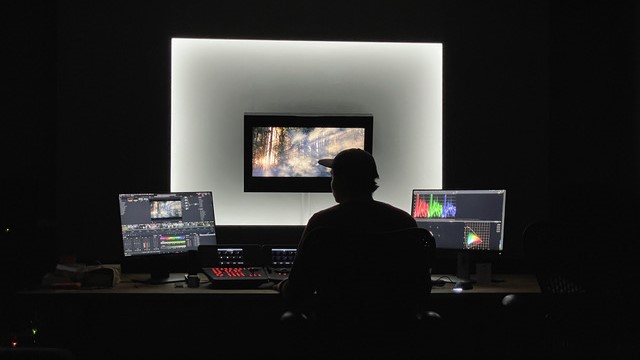Wash Post Crosses the Bridge from SDR to HDR
Colorist Jon Dobson unveils his work on rugged reality show, “The Bridge”

Filmed in the Welsh mountains and countryside, “The Bridge” sees 12 strangers team up to build a large bridge over a lake in pursuit of a £100,000 prize pot. Produced by Workerbee, actor James McAvoy voices over the five-part series.
Ross O’Callaghan and Andrew Allen were the DPs. They opted to shoot on Sony FX9s, combined with Sony G-Master and Arri Super Speed lenses, to take advantage of the dual ISO modes and low light capabilities while set lighting was kept to a minimum.
Having first aired in the U.K. in standard definition in October last year, a six-part Dolby Vision HDR version is soon to be shown on HBO Max in the U.S.
Wash Post owner and colorist Jon Dobson begins, “As it is a reality series, we wanted to try and distance the look from what viewers would normally expect to see. We were following on from a Spanish version of the show but had the freedom to make it our own—particularly because the setting is in Wales rather than Patagonia. We went for a filmic, soft and stylized grade, which truly makes the show stand apart from others in the genre.”
It was a requirement from the outset that there would be a Dolby Vision deliverable for HBO Max. However, because of the tight turnaround, Dobson explains he had to grade in SDR for Channel 4 initially, and then replicate the look afterwards in HDR.
“I wanted to make sure I kept a close tie between the Channel 4 and HBO grades while still taking advantage of the significant benefits HDR offers. By using group grades alongside DaVinci Resolve Color Management, we created a workflow that allowed us to not to go back to square one between the two versions, and retain the film emulation look for both.”
At Wash, the team uses both Windows and Mac-based multi-GPU DaVinci Resolve systems alongside the Resolve advanced panels and DeckLink 8K Pro I/O cards. For monitoring they use the Eizo CG3145/6 HDR monitors.
Get the TV Tech Newsletter
The professional video industry's #1 source for news, trends and product and tech information. Sign up below.
Dobson adds: “TV shows notoriously have tight turnaround times, and this one was no exception, so having efficient tools like these is crucial.”
Keren Aarons, technical director at Workerbee says, “We had to figure out the most efficient way of ingesting and transcoding around 200 hours of 4K footage per day over 22 days for the offline edit, which was done in Media Composer. Avid’s encoding system isn’t optimized to harness multiple CPUs or make use of GPU encoding, and so we built some bespoke Resolve machines to take on this task.
“It is one of the very few off-the-shelf products that transcodes Avid OP1 Atom files natively. The GPU enhanced Resolve monsters tore through the transcoding at a ridiculous rate—something like 280-320 frames a second from 4K down to DNxHR 36 quarter res. All in all, the system held together admirably, and we’ve now incorporated this transcoding workflow into all our post work.”
The online edit was completed in DaVinci Resolve by The Finish Line’s Dave Stephenson. “Doing so removed the need to conform between the grade and online, so we just archived the project and uploaded it on our Media Shuttle,” explains Dobson.
Looking back on any scenes that really lent themselves to the extra range afforded by HDR, Dobson concludes: “There are some beautiful landscapes that really shone in HDR, they took on a depth that just wasn't possible in the SDR grade.” And Benjamin Hirsch, series director at Workerbee adds, “Jon worked wonders with the footage, achieving a look that was warm, inviting and vibrant while cinematic, and the HDR version truly showed off the Welsh countryside in all its glory.”
This story first appeared on TV Tech's sister publication TVBEurope.
